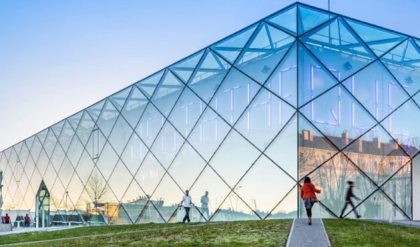Introduction
One of the most important considerations when designing a building is the extent to which it provides an environment that is comfortable for its occupants. Comfort in the built environment is affected by a great number of different factors which can, if not addressed properly, can lead to poor levels of comfort, discomfort, or can even cause harm and ill health to occupants.
Aspects of comfort include; personal factors, health and wellbeing, thermal comfort, indoor air quality, visual comfort, noise nuisance, ergonomics, and so on.
Personal factors
Personal factors that can affect the level comfort in a building include:
§ Age.
§ Gender.
§ Level of health.
§ Clothing worn.
§ Type of activity and level of intensity.
§ Access to food and drink.
§ Acclimatisation.
§ Psychological state.
For example, older people tend to feel the cold more than younger people.
Health and wellbeing
Comfort is closely related to wellbeing, which was defined by Dodge et al (2012) as ‘…when individuals have the psychological, social and physical resources they need to meet a particular psychological, social and/or physical challenge’. Wellbeing incorporates other factors such as employment and relationship status, rather than just physical comfort within an environment.
For more information see: Wellbeing.
Building related illnesses (BRI) are allergic reactions or infections which can be directly attributed to being in the building.
For more information see: Building related illnesses.
Sick building syndrome (SBS) relates to symptoms of acute health and/or comfort effects for which no specific cause can be found but that can be attributed to time spent in a particular building.
For more information see: Sick building syndrome.
Thermal comfort
Thermal comfort is defined in BS EN ISO 7730 as ‘…that condition of mind which expresses satisfaction with the thermal environment.’, i.e. the condition when someone is not feeling either too hot or too cold.
When people are dissatisfied with their thermal environment, not only is it a potential health hazard, it also impacts on their ability to function effectively, their satisfaction at work, the likelihood they will remain a customer, and so on. Therefore, it is imperative that building design ensure the means of achieving good indoor climate.
For more information, see Thermal comfort and Heat stress.
Indoor air quality
Human comfort can also be affected by the quality of ventilation in a building. Ventilation is necessary in buildings to remove ‘stale’ air and replace it with ‘fresh’ air, as well as to prevent overheating. For more information, see Ventilation.
We all breathe air to live and if it is polluted or carries airborne diseases we can fall ill as a result. Airborne hazards such as carbon monoxide or longer-term indoor threats like radon release are sometimes a problem but the toxic fine combustion particles mainly from traffic emissions and some power stations are the major health risk to the public at large.
For more information see: Indoor air quality and Air quality.
Visual comfort
Visual comfort is also an important factor that involves the provision of natural light, external view/s, reduction of glare and so on.
For more information see:
§ BREEAM Visual comfort Glare control.
§ BREEAM Visual comfort Daylighting.
§ BREEAM Visual comfort View out.
Noise nuisance
Comfort can also be negatively influenced by the amount and type of noise in a building. Noise nuisance is excessive noise or disturbance that may have a negative effect on health or the quality of life, e.g. being able to hear the occupants of a neighbouring house through the walls.
For more information, see Noise nuisance.
Ergonomics
Ergonomics is particularly related to the design of workplaces, products and systems to best fit those who use them. The aim of effective ergonomics is to apply learning about human abilities and limitations to improve interaction with environment and products, and prevent or limit the risk of illness or injury.




Comments are closed.